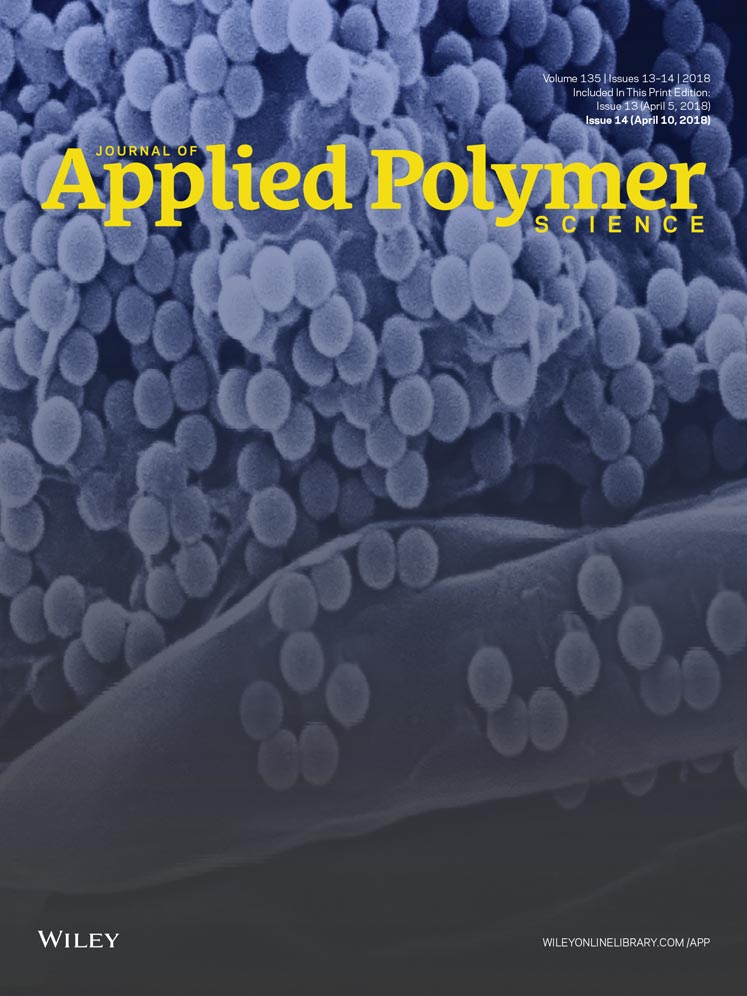Influence of crosslinking methods toward poly(vinyl alcohol) properties: Microwave irradiation and conventional heating
ABSTRACT
In this study, crosslinking of poly(vinyl alcohol) (PVA) with tartaric acid, as crosslinker, is performed using microwave irradiation. A comparison between the properties of PVA crosslinked using microwave irradiation and conventional heating methods is also discussed. While the water absorption, tensile and thermal properties of PVA crosslinked by either of the methods are comparable, microwave irradiation took only one-eighth (14 min) of the time compared to conventional heating. In comparison with PVA (42 MPa), the strength of PVA crosslinked with 35% TA increased to 145 and 153 MPa for conventional heating and microwave irradiation, respectively. Water absorption of crosslinked PVA film is successively reduced to less than 30% in comparison with PVA (∼200%). Moreover, the crosslinked films are stable at higher temperatures in comparison with PVA. © 2017 Wiley Periodicals, Inc. J. Appl. Polym. Sci. 2018, 135, 46125.




